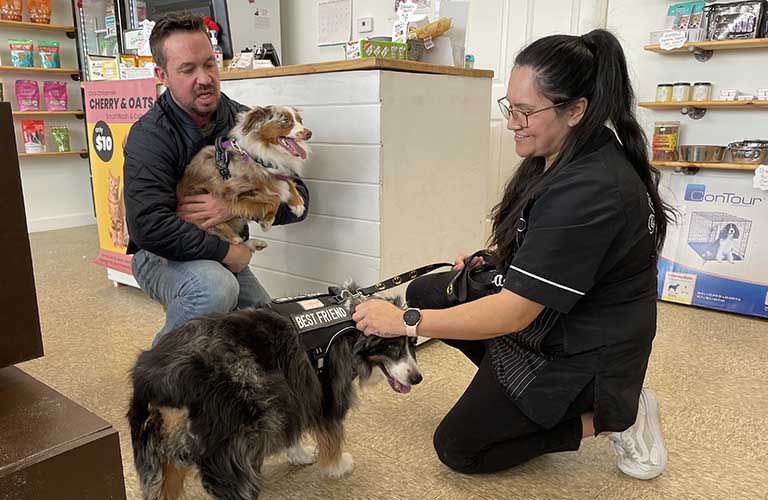Communicating your dog’s haircut preferences to a groomer can be a frustrating aspect of dog ownership, but verbalizing your vision is crucial for a desirable outcome. Whether you relocated to a new state, your regular groomer is retiring, you’re a new dog owner or it’s your first time owning a breed that requires a haircut, the insights shared in this blog are invaluable.
By embracing these tips in this blog, you empower yourself to effectively convey your expectations to your groomer with more confidence and clarity. This helps ensure every grooming session is tailored to meet your preferred specifications.
Research First
Before taking your dog to the groomers, it’s crucial to understand their specific hair type, whether it’s super curly, wiry, straight, soft or a double coat. Each texture and even breed dictate different grooming styles and requirements. Start researching the various looks suitable for your dog’s hair type. Explore specific needs and techniques necessary to maintain their coat properly. Check out the distinctions in grooming styles between household pets and show dogs of the same breed. Diving into a variety of grooming options can help you narrow down what exactly you want.
Next, take the time to research groomers in your area. Look into their social media profiles, browse through their portfolio of work and read customer reviews. Assess whether their grooming style aligns with your preferences and expectations for your pet.

Find Photos and Write Notes
As part of your research, consider saving photos of dogs with similar hair textures and shapes to your own pet. These images serve as valuable visual references during your grooming consultation. When meeting with your groomer, bring along these photos to discuss how you envision each aspect of your dog’s grooming. Take time to go over each body part depicted in the pictures, detailing your preferences for length, style and shaping. These notes assist your groomer in understanding your expectations and provide clarity on the desired outcome for your pet’s grooming session.
A useful tip is to capture a photo of your dog after a particularly great grooming appointment. This serves as a helpful reference point for future appointments, especially if you switch groomers or need to remind your current groomer of previous styles.
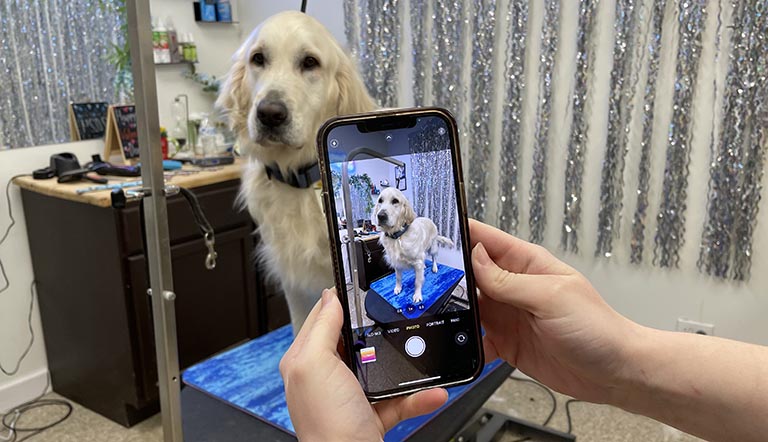
Be Specific With What You Want
When discussing grooming preferences for your dog, using general terms like “short,” “puppy cut” or “trim” can lead to misinterpretation. These terms are vague and hold different meanings for different people. To avoid confusion and ensure your dog receives the desired style, it’s important to provide more specific details.
Define what “close” means to you – is it half an inch or one and a half inches? When you mention “long,” clarify whether you envision hair touching the ground or fully covering a part of the body. Expressing the amount of hair you’d like to keep on your dog’s body is sometimes easier to explain than saying how much you want to be removed. Describing the desired length for various body parts such as the ears, tail, face, feet and body is essential. Engage in conversation about guard lengths with your groomer and have them help you determine the most suitable options for achieving your preferred aesthetic.
Bringing a picture serves as an excellent reference point for communicating your expectations. Your groomer relies on your vision to create the preferred result, whether it’s a traditional breed-specific cut, a close shave or a combination of styles.
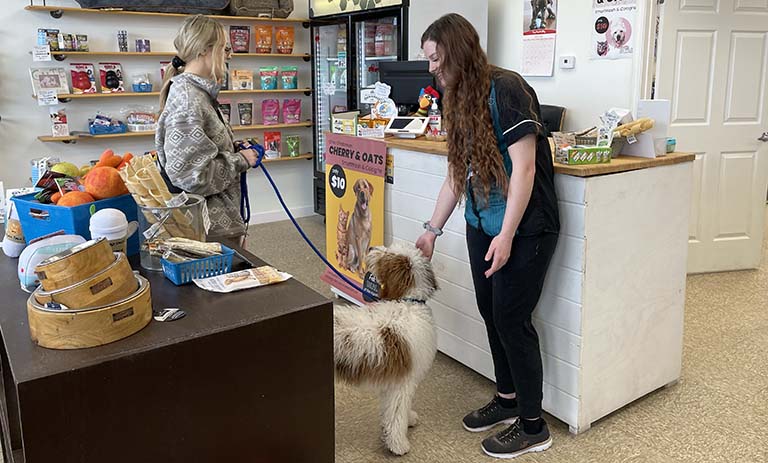
Rely on Your Groomer’s Expertise
Invite your groomer to share their expertise and recommendations. Sometimes pet owners unintentionally apply human comfort standards to their pets, such as assuming short hair is best in summer and longer hair in winter. Another example is thinking their pet’s full coat looks better despite it containing mats. However, these assumptions may not always align with what’s best for our furry friends. By collaborating with your grooming and remaining open to their suggestions, you can be sure your pet receives personalized care that meets their specific requirements.
In addition to discussing grooming preferences, it’s valuable to explore what other services your groomer offers and how they can assist you further. Consider asking about grooming packages and express any specific needs or preferences you have. For example, if you dislike trimming your dog’s nails or cleaning their ears, inquire whether these services are included in the grooming package or available as add-ons. Your groomer can provide insights into the best grooming practices tailored to your pet’s needs.
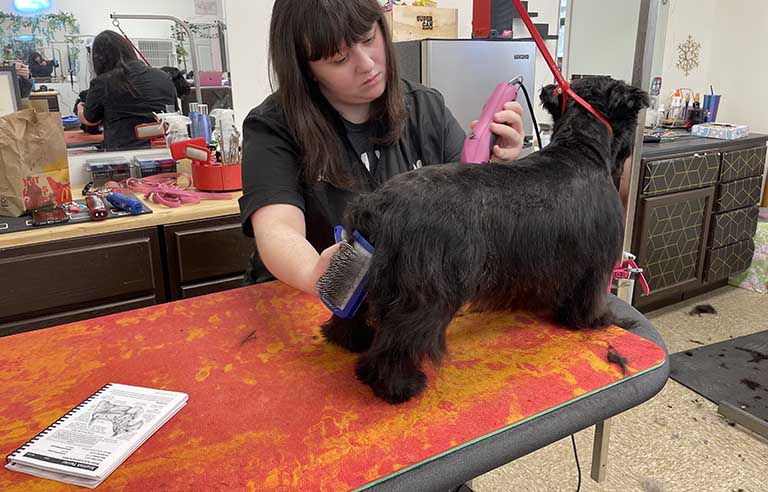
Set Your Groomer Up for Success
Communicate to your groomer any sensitivities, health concerns or behavioral habits your dog may have with your groomer beforehand. Preparing your groomer in advance, whether due to your dog’s dislike of being touched in certain areas or a medical condition, improves your pet’s grooming experience and enables the groomer to customize the process accordingly. They can take extra care around sensitive areas or modify techniques so that the dog feels comfortable and safe throughout the session. A calm dog makes grooming easier, allowing the pet stylist to achieve your desired look while maintaining a stress-free pace.
Keep in Mind Achievable Expectations
It’s important to uphold a sense of realism when discussing grooming expectations for your dog. Certain breeds and individual characteristics may limit the achievable styles. For instance, a golden retriever cannot realistically sport a poodle-style cut. When providing reference photos, ensure they depict dogs of the same breed or at least similar breeds with comparable hair textures. Attempting to compare vastly different breeds or hair types can lead to unachievable expectations, as the desired look may not translate effectively across different breeds or coat textures.
Consistency in at-home brushing and dog behavior also play key roles in determining the potential grooming outcome. Dogs that aren’t regularly brushed may require shorter cuts due to matting issues. Additionally, dogs with a tendency to wiggle or become restless may not tolerate intricate grooming styles, necessitating simpler cuts.
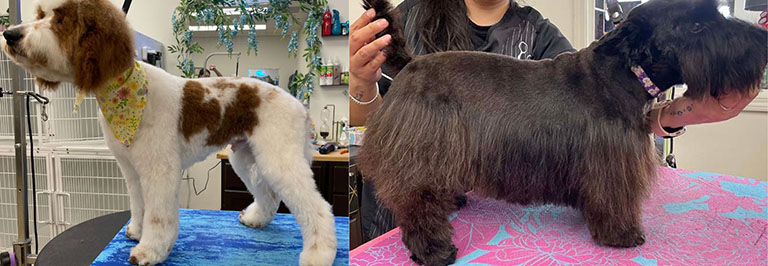
Partnership with Your Groomer
Maintaining your pet’s grooming routine requires teamwork with your groomer. View them as a partner, not just a service provider. Conduct thorough research, provide clear instructions and leverage their expertise for personalized care for your dog. Use pictures and notes to clarify your vision. Communicate to your groomer any sensitivities or health concerns and set realistic expectations based on breed and behavior. Consistent at-home care, like brushing, helps you do your part in preparing for a successful grooming session. By working together and staying consistent, you can ensure your dog’s coat remains in optimal condition while nurturing a trusting relationship with your groomer.


